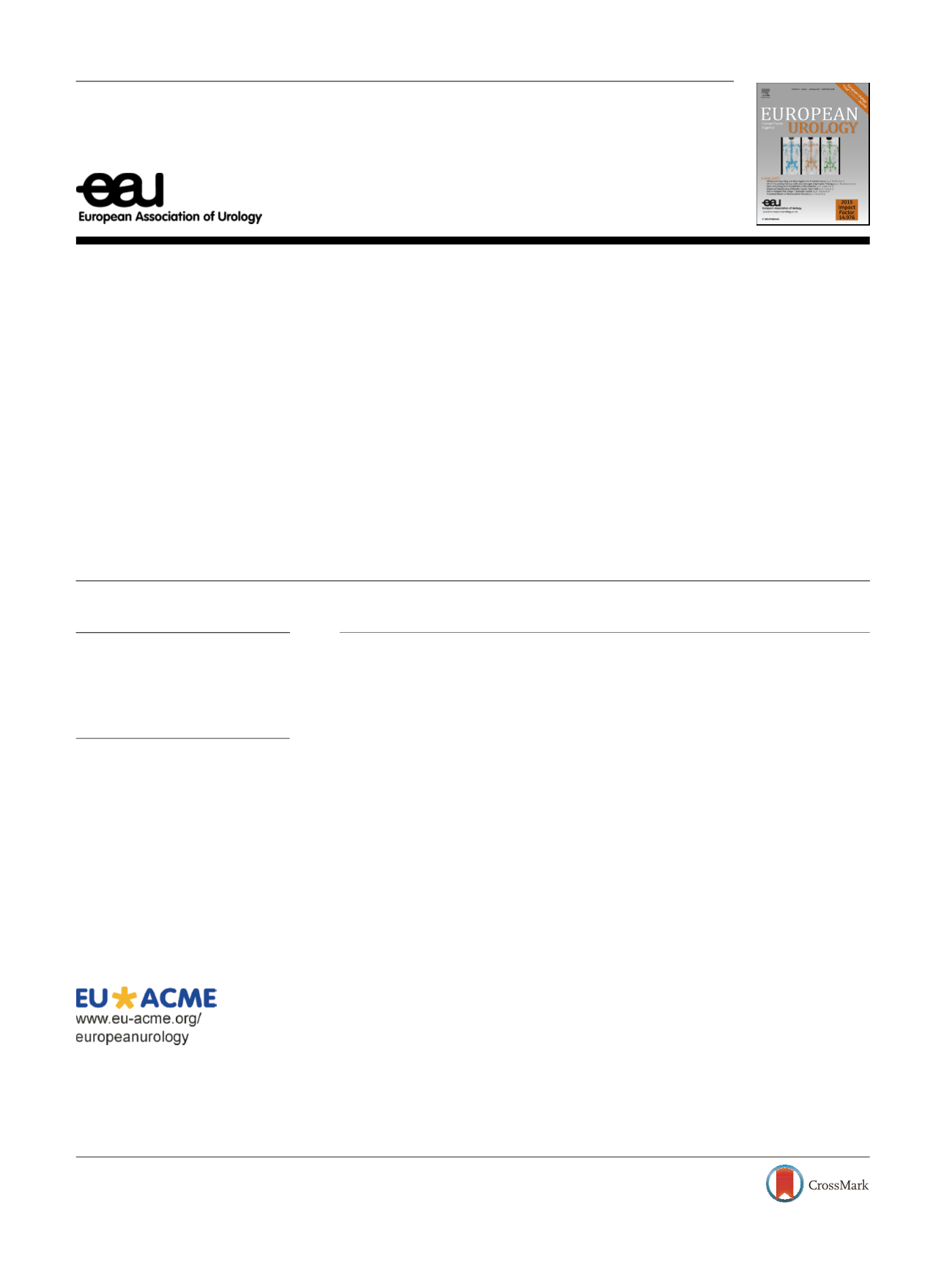

Platinum Priority – Review – Benign Prostatic Hyperplasia
Editorial by Rebecca L. Tregunna, Paul Cathcart and Matthew F. Bultitude on pp. 998–999 of this issue
Emerging Minimally Invasive Treatment Options for
Male Lower Urinary Tract Symptoms
Giuseppe Magistro
a , * ,Christopher R. Chapple
b ,Mostafa Elhilali
c ,Peter Gilling
d ,Kevin T. McVary
e ,Claus G. Roehrborn
f ,Christian G. Stief
a ,Henry H. Woo
g ,Christian Gratzke
aa
Department of Urology, Ludwig-Maximilians-University of Munich, Munich, Germany;
b
Department of Urology Research, University of Sheffield, Sheffield,
England, UK;
c
Department of Surgery, Division of Urology, Royal Victoria Hospital, McGill University Health Centre, Montreal, QC, Canada;
d
Tauranga
Hospital, Bay of Plenty District Health Board, Tauranga, New Zealand;
e
Division of Urology, Southern Illinois University School of Medicine, Springfield, IL,
USA;
f
Department of Urology, University of Texas Southwestern Medical Center, Dallas, TX, USA;
g
Sydney Adventist Hospital Clinical School, University of
Sydney, NSW, Australia
E U R O P E A N U R O L O G Y 7 2 ( 2 0 1 7 ) 9 8 6 – 9 9 7available at
www.scienced irect.comjournal homepage:
www.europeanurology.comArticle info
Article history:
Accepted July 4, 2017
Associate Editor:
James Catto
Keywords:
Male lower urinary tract
symptoms
Benign prostatic hyperplasia
Minimally invasive treatment
Intraprostatic injection
Prostatic urethral lift
Temporary implantable nitinol
device
Waterjet ablation
Convective water vapour energy
Prostatic artery embolization
Please visit
www.eu-acme.org/ europeanurologyto read and
answer questions on-line.
The EU-ACME credits will then
be attributed automatically.
Abstract
Context:
Lower urinary tract symptoms (LUTS) are one of the most common and
troublesome nonmalignant conditions affecting quality of life in aging men. A spectrum
of established medical and surgical options is available to provide relief of bothersome
LUTS. Both the adverse events of medication and the morbidity with surgical treatment
modalities have to be counterbalanced against efficacy. Novel minimally invasive
treatment options aim to be effective, ideally to be performed in an ambulatory setting
under local anaesthesia and to offer a more favourable safety profile than existing
reference techniques.
Objective:
A comprehensive, narrative review of novel minimally invasive treatment
modalities for the management of male LUTS due to benign prostatic enlargement is
presented.
Evidence acquisition:
Medline, PubMed, Cochrane database, and Embase were screened
for randomised controlled trials (RCTs), clinical trials, and reviews on novel minimally
invasive treatment options for male LUTS due to benign prostatic enlargement.
Evidence synthesis:
With regard to newly devised intraprostatic injectables (botulinum
neurotoxin A, NX1207, PRX302), PRX302 is currently the only substance that was
superior to placebo in a phase 3 RCT providing proof of efficacy and safety. The prostatic
urethral lift technique has been evaluated in several phase 3 trials showing rapid and
durable relief of LUTS without compromising sexual function in carefully selected
patients without a prominent median lobe. The first clinical experience of the temporary
implantable nitinol device demonstrated that implantation of this novel device is a safe
procedure, easy, and fast to perform. Further studies are required to evaluate efficacy,
durability, and to define appropriate patient selection. New ablative approaches like the
image guided robotic waterjet ablation (AquaBeam) or procedures based on convective
water vapour energy (Rezu- m) are in the early stages of development. Prostatic artery
embolization performed by interventional radiologists at specialised centres shows a
high technical success rate in the treatment of bothersome LUTS. However, a substantial
clinical failure rate and a particular spectrum of complications not commonly seen after
urologic interventions do occur and need to be critically evaluated.
* Corresponding author. Department of Urology, Ludwig-Maximilians-University of Munich,
Marchioninistraße 17, Mu¨ nchen 81377, Germany. Tel. +49894000.
E-mail address:
Giuseppe.Magistro@med.uni-muenchen.de(G. Magistro).
http://dx.doi.org/10.1016/j.eururo.2017.07.0050302-2838/
#
2017 European Association of Urology. Published by Elsevier B.V. All rights reserved.
















